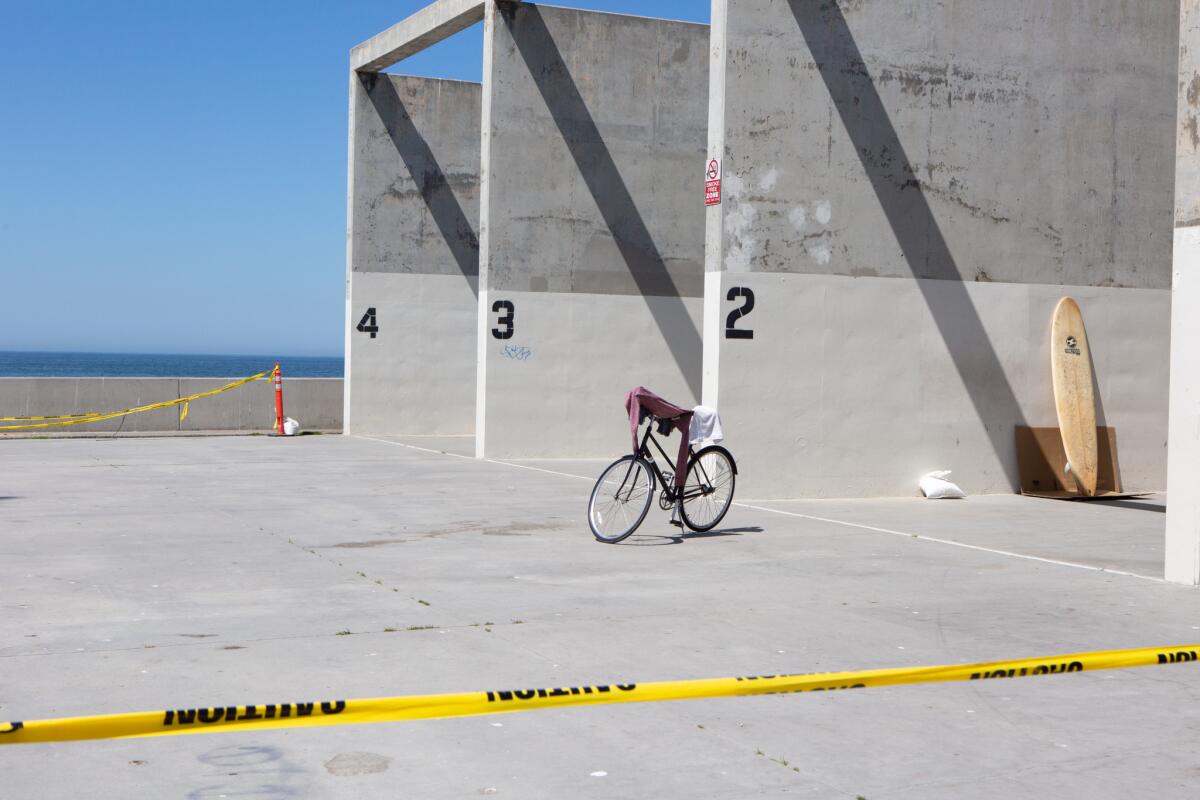Reopening California remains a ways off as officials urge caution, cite dangers

- Share via
There are growing signs that stay-at-home orders across California will remain in place a while longer.
Gov. Gavin Newsom said this week that, while California is making progress in bending the coronavirus curve, most of the six conditions he set for the state to consider loosening the stay-at-home order he issued last month have not been met. The only change the governor has made is to allow hospitals to begin scheduling some elective surgeries, citing sufficient capacity.
The six goals include the ability to closely monitor and track potential cases; prevent infection of high-risk people; prepare hospitals to handle surges; develop therapies to meet demand; ensure schools, businesses and child-care facilities can support social distancing; and develop guidelines for asking Californians to stay home again if necessary.
It’s still unclear whether some communities where the outbreak has been less severe will be able to relax restrictions.
On Friday, Newsom said, “We will consider local conditions” when deciding when to ease the rules. “We will consider those things not only from the perspective of the spread of the virus, not only from the perspective of the number of deaths and trend lines, but also in terms of our broader capacity.”
San Francisco
San Francisco Mayor London Breed said the Bay Area’s shelter-in-place order will probably be extended beyond the current expiration date of May 3.
“People are asking about this: Will the public health order get extended? The likelihood that that will happen is very likely. And what that means is another few weeks, or even a month, of asking you all to comply and to remain at home and to continue to follow the social distancing orders that we put forth,” Breed said.
“How we reopen is going to be important to ensuring that we do it responsibly so that we don’t go backward,” he said.
Santa Clara County
On Wednesday, the health officer for Santa Clara County, Dr. Sara Cody, said the discovery that people had been infected with the virus there earlier than previously believed illustrated how important the shelter-in-place order is to slow its spread.
Without directly answering a question at a news conference Wednesday about relaxing the order, Cody said, “We anticipate that this pandemic is going to be going on for a very, very, very long time. We know that we do not have immunity in the population. Nor do we have a vaccine. So any time that we let up on our mitigation measures, we are going to expect to see a spike in cases, hospitalizations and deaths. That is certain.”
Napa County
Napa County has extended its Shelter at Home order to be indefinite, but made the following changes:
• Permits construction with proper physical distancing.
• Permits drive-in religious services with proper physical distancing.
• Permits in-person residential real estate viewings with proper protocols.
• Permits landscaping and gardening maintenance that is not purely for cosmetic purposes.
• Allows the use of golf courses and driving ranges with documented protocols.
• Strongly recommends the use of cloth face coverings when outside the home.
Solano County
Solano County, which includes Vallejo and Fairfield, has extended its Shelter at Home order to May 17.
Los Angeles County
Los Angeles County officials are developing a plan to slowly ease stay-at-home orders, but four key benchmarks must first be met.
“We don’t want to undo all the good we’ve done and accomplished so far,” County Supervisor Kathryn Barger said Friday. “We are not yet on the other side of this pandemic and we don’t want to prematurely ease restrictions.”
She said the county will first need to make sure that its hospitals are adequately staffed, have enough resources to perform testing, and a sufficient number of ventilators and other medical supplies to handle routine care as well as possible influxes of COVID-19 patients.
Second, the county must ensure that protections are in place for the most vulnerable, including the elderly, homeless people and those who live in institutional settings or don’t have access to services.
Third, the county must have the capacity to test, isolate and quarantine all those who are ill, as well as to conduct surveillance to prevent further spread.
And fourth, the county must maintain physical distancing and infection control measures, including by providing businesses with educational materials and guidance to ensure that the rules can be followed when they reopen.
Los Angeles County’s Safer at Home order is in effect through at least May 15.
More to Read
Sign up for Essential California
The most important California stories and recommendations in your inbox every morning.
You may occasionally receive promotional content from the Los Angeles Times.
















